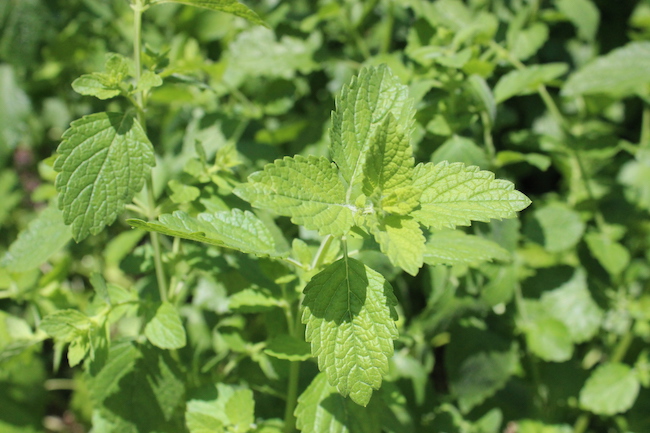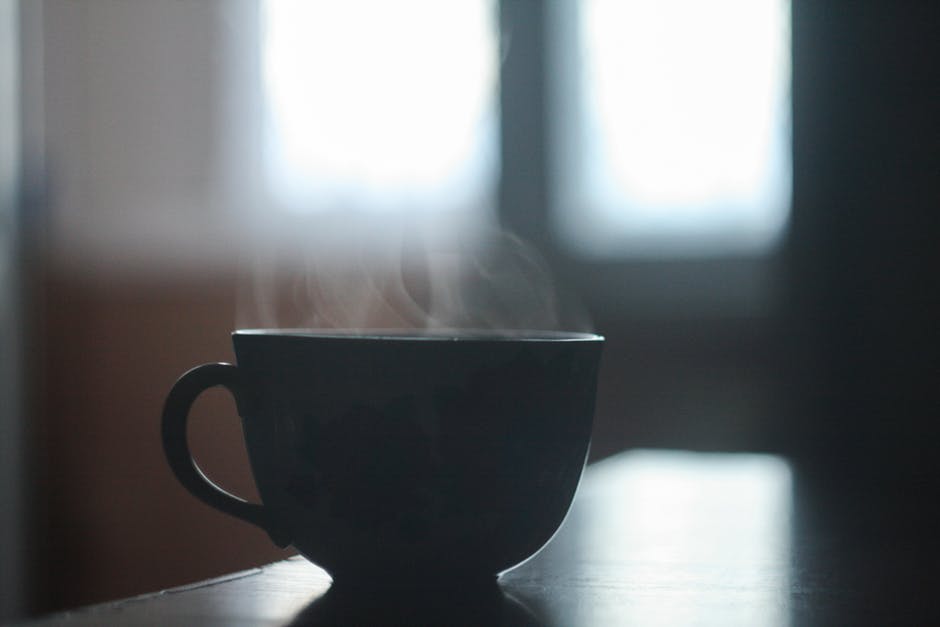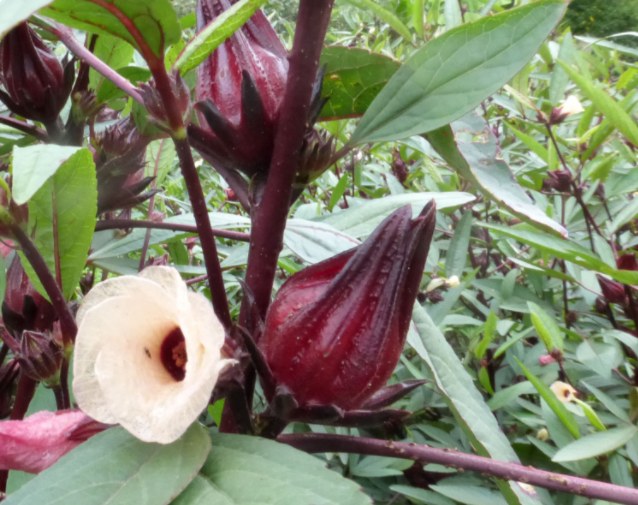
After a long day in the garden there’s nothing better than a glass of iced tea and chair in the shade. While I do love the classic sweet tea with just black tea and sugar, having something fresh from the garden makes it extra special. This is my favorite tea blend for hot summer days. It’s super easy to make and uses just 3 ingredients, fresh fruit slices, lemon balm, and red clover blossoms.
Lemon balm is a wonderful and easy to grow perennial herb. It can be cut and used in teas all summer long. Some studies have found lemon balm to have important antiviral properties and it’s also known to have a calming effect.
Red clover has long been used as an herbal remedy and has a long list of benefits. It’s believed to have a mild sedative effect and be anti-inflammatory.
*Red clover and other herbs can react with certain medications. Please consult your doctor with any questions or concerns regarding herbal remedies.*
Ingredients

1 pint of water
2 sprigs of lemon balm
4 red clover blossoms
fruit slices (orange, strawberry, lemon, grapefruit, etc.)
*Optional* maple syrup or honey to taste
Directions
There’s two ways to make this tea. The quickest is to pour hot water over your herbs and fruit and and let them steep for 15 minutes before placing in the fridge or freezer to chill.
Alternatively you can make sun tea. Add all your ingredients to a mason jar with a lid and let your jars sit in the sun for about 4 hours before pouring over ice.
If desired you can strain your tea before adding ice. If you want your tea to look extra pretty save some fresh fruit and herbs to garnish once the tea has steeped.
If you’d like to have this tea year round or in a convenient travel option all of the ingredients can be dehydrated. For the lemon balm and red clover you should harvest them in the morning or evening when it’s cool. Dry them in a dehydrator at around 105°F. If you don’t have a dehydrator lemon balm can be bundled and hung upside down to dry and red clover flowers can be laid out on a screen.
Fruit should be thinly sliced and dehydrated at around 135°F until the slices are brittle. Alternatively you can dry them in your oven on the lowest possible temperature.
Once dry you can mix the herbs and fruit and store in an air tight container. Herbs will lose some of their potency and flavor as they dry so you may need more than you would fresh.
Store-bought herbal teas can be expensive however many herbs are easy to grow in your own back yard and are even better when harvested fresh!
Pin it for later.



